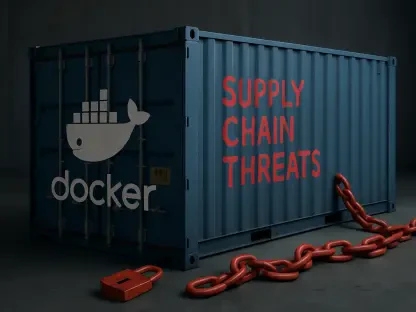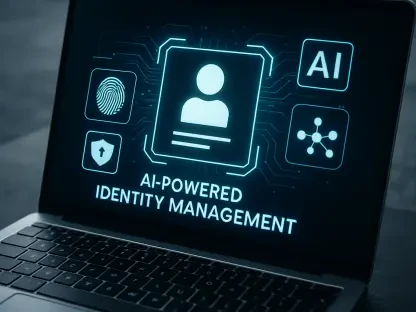The UK government is confronting a series of digital procurement challenges that threaten to undermine its ambitious plans to modernize public services and operations. At the heart of these difficulties is a striking disconnect between strategic ambitions and the practical realities encountered in managing technology procurement across government bodies. According to a report scrutinizing its approach, the Public Accounts Committee (PAC) highlighted significant inefficiencies that stem from a dearth of specialized staff and poorly defined roles that have stalled progress. A substantial £14 billion of government expenditure directed annually to technology solutions is hampered by a lack of cohesive oversight and skilled professionals, leading to suboptimal outcomes. These shortcomings not only impair the government’s ability to negotiate beneficial terms with leading technology suppliers but also slow the transition from legacy systems to advanced, integrated alternatives that are essential for competitiveness and effective service delivery.
Staffing Challenges in Digital Procurement
One of the most critical issues confronting the UK government’s digital procurement strategy is the inadequacy of dedicated staff with the necessary expertise to manage such complex tasks. Despite having around 6,000 individuals within Whitehall who possess commercial skills, it is startling that only 15 people work full-time on managing relationships with major technology suppliers. This workforce disparity is particularly concerning considering the rapid pace of digital transformation necessitated by technological advancements like artificial intelligence and cloud computing. The shortage of dedicated procurement professionals has resulted in an inability to harness the government’s substantial purchasing power to secure advantageous deals from significant technology vendors. This situation becomes more precarious when negotiating terms for essential transitions from outdated legacy systems to modern digital infrastructures. Ensuring the presence of a skilled and adequately sized workforce is essential for effectively implementing these transitions and maintaining the momentum of digital transformation within governmental operations.
Moreover, the introduction of a “blueprint for a modern digital government” by the administration aims to improve efficiency through digital technologies and create new opportunities for startups. The blueprint envisions the establishment of a Digital Commercial Centre of Excellence, intending to streamline contract negotiations and engage with UK startups. However, without a well-defined execution plan or accountability framework, this initiative remains in its infancy. Clarifying the roles and authority within this framework is essential for delivering the promised improvements and ensuring sustained progress. The center’s effectiveness will rely on the ability to draw and manage senior negotiators, whose expertise is fragmented across departments, further complicating efforts to navigate the complexities of supplier negotiations. Bridging these gaps by augmenting staff capabilities and clarifying roles will significantly enhance the government’s ability to manage procurement processes successfully.
Role Confusion and Its Impact
The complexities surrounding the roles of different bodies within the UK government further exacerbate the digital procurement conundrum. The Government Commercial Function (GCF) is tasked with public procurement policy, while the Government Digital Service (GDS) covers digital and data responsibilities under the Department for Science, Innovation and Technology (DSIT). Historically, the GDS has not had a formal procurement role, which the PAC suggests needs urgency in re-evaluation. With the proposed Digital Commercial Centre of Excellence, intended for collaboration between the GCF and GDS, there remains ambiguity about its authoritative reach. This lack of clarity complicates efforts to streamline procurement processes and emphasizes the need for DSIT to assert influence across departments for meaningful reform.
Furthermore, the discrepancy in utilizing senior negotiators across various departments highlights inconsistent deployment scenarios. Despite the Cabinet Office’s mobilization of expert negotiators to engage with the largest technology suppliers, their efforts are often scattered and uncoordinated, reducing their collective impact. This inconsistency is a persistent challenge that requires immediate attention for the government to optimize its negotiation processes. Establishing a clear framework for collaboration between departments and aligning roles and responsibilities can radically transform the procurement landscape. By doing so, the UK government will have a more focused approach to supplier negotiations and quality contract management, ensuring that digital procurement advances align with broad strategic goals.
Addressing Training Deficiencies and Vendor Lock-In
Beyond role and staffing issues, another formidable challenge is the existing gap in training among civil servants tasked with digital procurement functions. Current training frameworks for commercial roles omit critical technology and digital financial management components, thereby weakening negotiation positions with prominent cloud service providers. This knowledge deficit prevents officials from skillfully navigating complex technological landscapes, limiting the government’s influence and ability to negotiate competitive terms. The Government Commercial Function acknowledges the need for reform yet lacks a defined strategy for implementing it. Developing a comprehensive and tech-focused curriculum could empower government negotiators with skills needed to address the growing intricacies of digital procurement.
Additionally, vendor lock-in presents a significant barrier to effective digital procurement. This phenomenon entails governmental reliance on specific cloud service vendors, limiting pricing and service flexibility. Such dependencies can culminate in exorbitant contract expansions, as seen with the Home Office’s costly engagement with AWS. Addressing this issue is crucial for enhancing the government’s negotiating leverage, by identifying opportunities for departmental synergies and collective action. Aligning contract terms to reflect government-wide requirements would better leverage its purchasing power, resulting in more favorable terms and enabling prompter responses to public service demands. Eliminating vendor lock-in through enhanced negotiation strategies will empower the government to secure flexible arrangements capable of adapting to evolving technological landscapes.
Towards a Cohesive Strategy for Digital Procurement
The PAC’s report calls for urgent action to rectify weaknesses in the UK’s digital procurement strategy. A concerted effort to clearly delineate responsibilities and streamline processes is vital to strengthen the government’s ability to leverage its purchasing capabilities. Addressing existing fragmentation across departments by enhancing communication channels and establishing clear leadership within the Digital Commercial Centre of Excellence will consolidate efforts and drive efficiencies. This consolidation will guard against redundancies and focus on creating a more unified and effective approach to procurement.
Moreover, embracing a strategic perspective that harmonizes policy-setting with operational execution through enhanced skills development and resource allocation is essential for growth. Ensuring that the government can utilize its immense purchasing power fully will result in more advantageous outcomes, fostering innovation while enhancing quality public service delivery. Implementing these improvements requires not only investments in training and skills enhancement but also an overarching commitment to creating clarity within procurement roles. By fostering an environment conducive to digital innovation, the UK government can realize significant economic and social benefits from its digital transformation initiatives.
Engraved Lessons and Forward Path
The UK government is facing numerous digital procurement challenges that could derail its plans to update public services and operations. Central to these issues is a glaring disconnect between strategic objectives and the realities faced when managing technology procurement across governmental entities. A review by the Public Accounts Committee (PAC) pointed out major inefficiencies rooted in a lack of specialized personnel and unclear roles, which have hindered progress. Each year, the government spends around £14 billion on technology solutions, yet this is compromised by inadequate oversight and a shortage of skilled professionals, resulting in subpar outcomes. These deficiencies not only diminish the government’s capability to secure favorable deals with top tech vendors but also impede the shift from outdated systems to advanced, integrated solutions, which are crucial for maintaining competitiveness and ensuring efficient service delivery. Consequently, these challenges must be addressed to realize the modernization goals.









